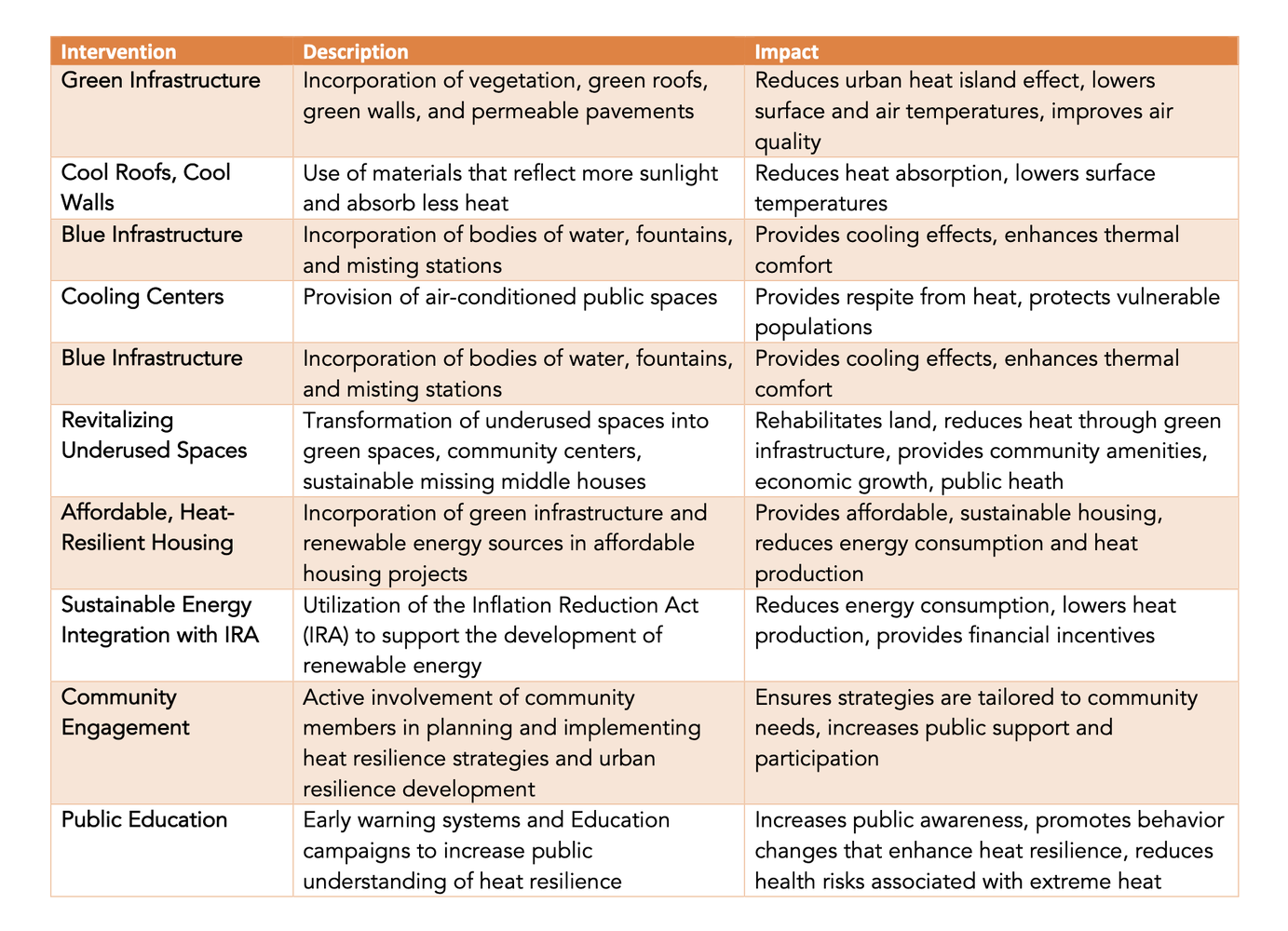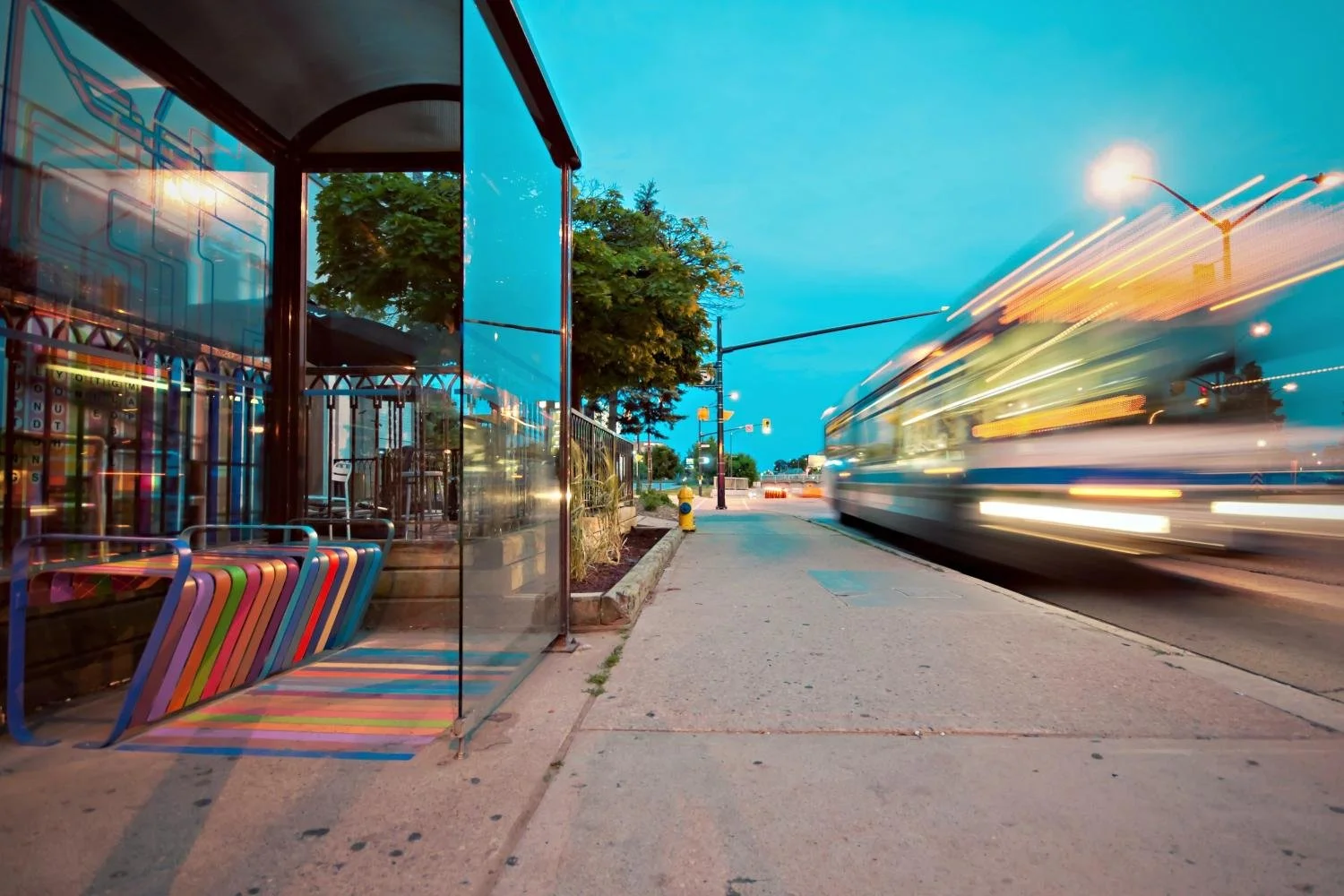Heat Resilience: More Than a Luxury, A Lifesaver
It all begins with an idea.
"Heat resilience" has emerged as a development priority as #globalwarming increases. The enormous possibility of using this knowledge at the community level has been clear to me as someone who conducted research on #extremeheat, #thermalcomfort #urbanplanning and #publichealth throughout my PhD research.
Dr. Ladd Keith, Dr. Sara Meerow as a leading experts on the impacts of extreme heat on communities, define heat resilience as "proactively mitigating and managing urban heat across the many systems and sectors it affects." It involves reducing heat exposure and vulnerability while enhancing adaptive capacity, crucial in areas where the "heat island" effect heightens the risk to public health, infrastructure, and the environment.
A critical element of my PhD research was developing the "Heat Resilience Metric" table. This summarizing tool showcases the practical application of heat resilience strategies, built on Dr. Keith's sage advice. By introducing this metric in this article, I want to provide providing a simple and straightforward approach and for communities, developers, and policymakers to get implement these strategies. The idea is to make understanding and using heat resilience strategies ideas easier, so more people use them.
Extreme Heat Resilience Metric (Ida Sami, 2023)
When these strategies are effectively implemented, they significantly improve the resilience of areas against high temperatures. This creates more comfortable living environments, for residents during periods of extreme heat.
So what is the role of the Inflation Reduction Act? The Inflation Reduction Act (IRA) is a recently passed U.S. law that aims to reduce inflation and promote healthy environments and lifestyles. The IRA has introduced twelve tax credits, called “direct-pay” tax credits, that can be utilized for local climate and resilience investments. This presents an opportunity to financially support clean energy microgrids that directly power public infrastructure. Consequently, such investments can mitigate power failure risks during heat waves, ultimately saving lives. Consequently, such investments can mitigate power failure risks during heat waves, ultimately saving lives.
We need to realize that heat resilience isn't a luxury, it's a must. As we work harder to combat climate change, our cities need to expand wisely, always considering resilience. Let's make sure we start building heat resilience where it matters most - at the community level.
#climateaction #extremeheat #resilience #humanhealth #inflationreductionact #urbanresilience
Heatwaves Are Perils for Public Transit Users: What Transit Systems and Riders Can Do
Heatwaves Are Perils for Public Transit Users: What Transit Systems and Riders Can Do
Bet you’re feeling this intense heat. So are many of the roughly one in 10 Americans who ride public transportation daily. Climate change poses a real threat to mass transit systems. In 2021, extreme heat damaged Portland’s streetcar wires and deformed Seattle's roadways, triggering suspension of service as so-called “sun kinks” from extreme temperatures can bend tracks and lead to a derailment. Scorching heatwaves this summer have had an impact on transit agencies in central Texas, Oklahoma and even New York City.
Public transportation officials have a duty, of course, to operate transportation systems resilient to changing climate impacts as they also aim for net-zero carbon emission. More transport planners find it essential to collaborate with climate adaptation or resilience teams in their cities to adapt to critical weather events for their riders’ safety.
Increasingly, municipal policymakers and planners are developing and adopting climate-sensitive design for public transit stops and transportation, from buses to trains. Some cities, such as Las Vegas, have raised awareness of the dangers of extreme temperatures to their transit riders. Las Vegas has modified its transit service schedule as part of its “beat the heat” initiative, and others are rerouting buses to reduce wait times and passengers’ exposure to the heat. Making operational adjustments often cost less than building and maintaining new physical infrastructure.
In heat-stricken Austin, Texas, in 2019, two University of Texas researchers studied transit ridership and concluded that tree planting at bus stops can prove more effective than bus shelters because trees mitigate climate change. In Portland, misting systems at public parks and stadium shelters that remain open through the night have been improvised as a method of cooling off during this summer’s extreme heatwaves. Spokane, Wash., public libraries have extended their hours to accommodate people seeking refuge from the heat, and the city doesn’t collect transit fees for passengers using the libraries as cooling centers.
In general, city planners and transit officials can take several initiatives to reduce their transit passengers’ heat stress while waiting for and taking public transportation. One essential: public officials must develop extreme-weather emergency plans and identify and adopt adaptation actions.
More specifically, they can: cool pavements on transit routes and transit station roofs via higher solar reflectance to lower surface temperatures; shade main walking and cycling routes to public transportation; use low-energy ventilation systems on buses and metro trains; paint buses white and tint windows to shade off the sun; install thermometers inside buses and trains for riders to monitor temperatures; set up misting systems in waiting areas (while being conscious of water and energy demands); and install drinking fountains in public spaces.
As for riders, what can they do when taking public transportation during off-the-chart heatwaves? They can stay hydrated, use a handheld fan, choose light and airy clothes, travel when it’s cooler, avoid needless trips, and avoid sugar and salt that can aggravate thirst. When possible, they should avoid the sun and be prepared for delays.
In other words: stay cool.
Extreme Heat by the Numbers
Extreme Heat by the Numbers
This summer has been blistering hot, and we are reminded of the following extreme heat statistics:
600–1,800: number of deaths per year in the US from extreme heat, highest of any weather hazard
115: Fahrenheit temperature of hottest day of 2022 in Phoenix, Arizona
13: Fahrenheit temperature difference between some disadvantaged neighborhoods and other neighborhoods
Extreme heat may not make front-page news or be counted in billion-dollar disaster totals, but these statistics show policy makers and practitioners ignore it at their peril.



